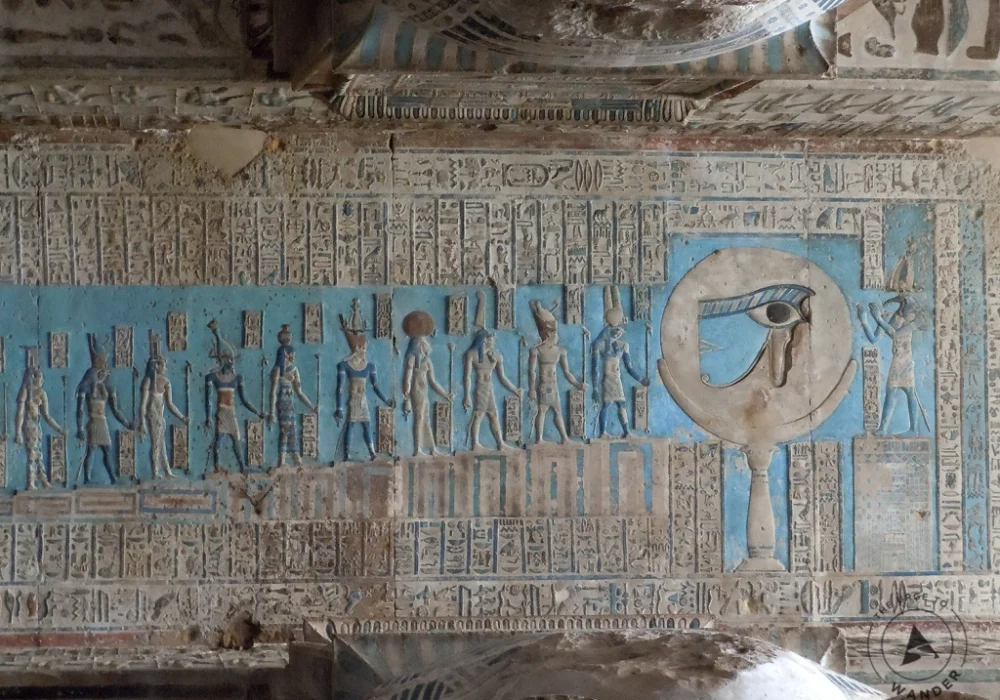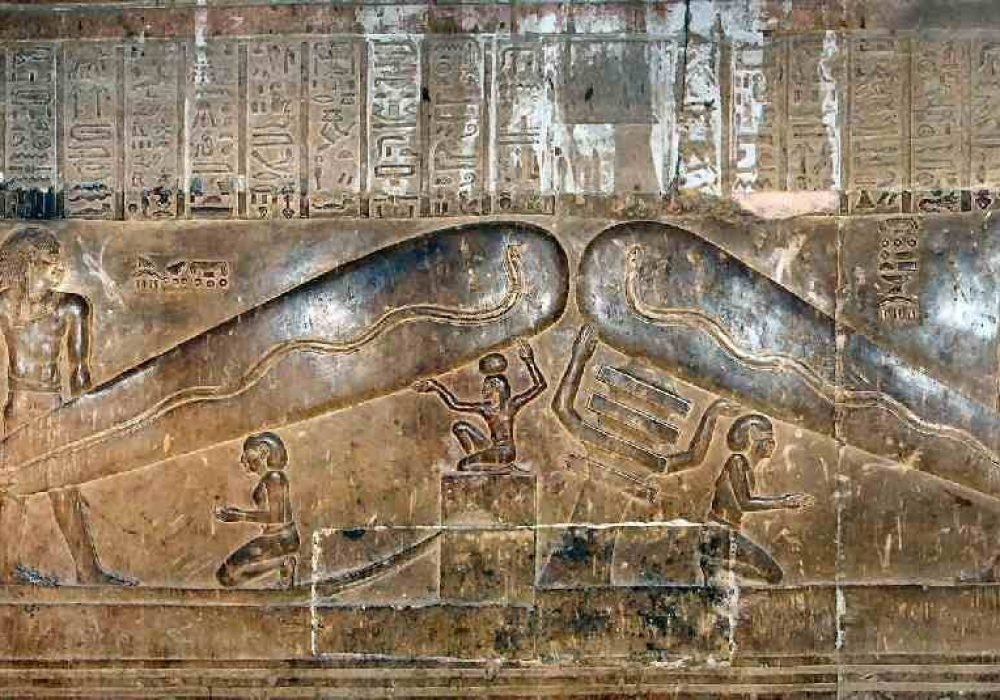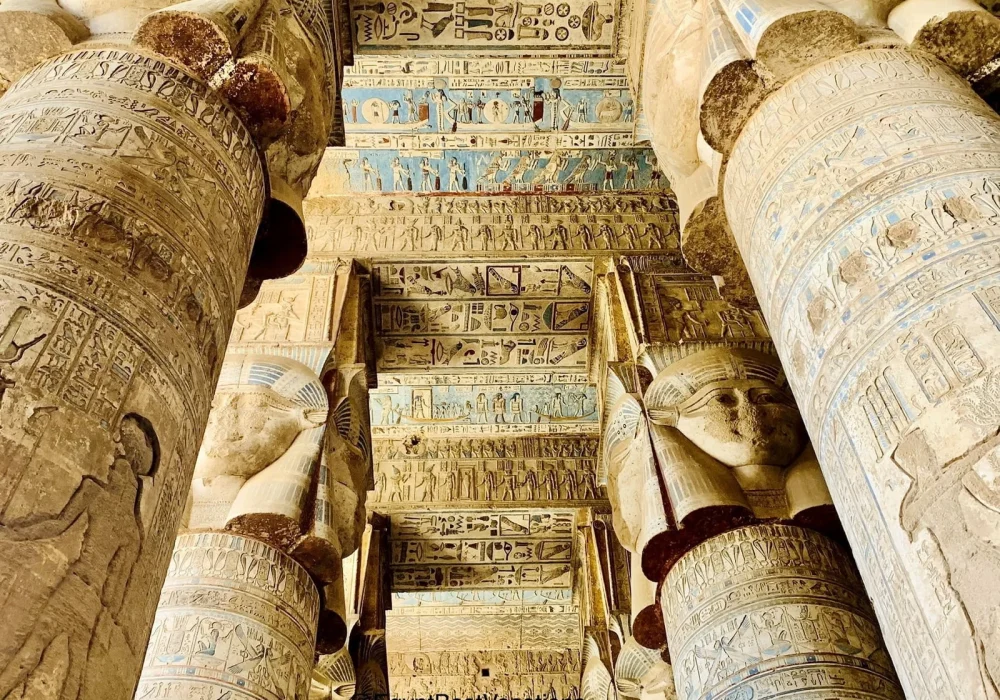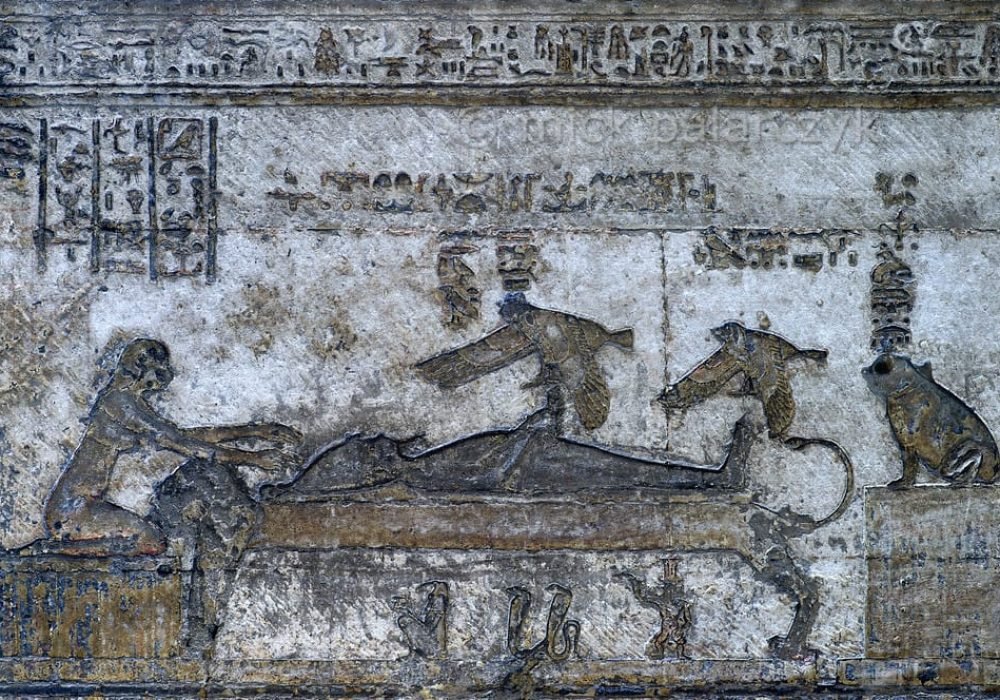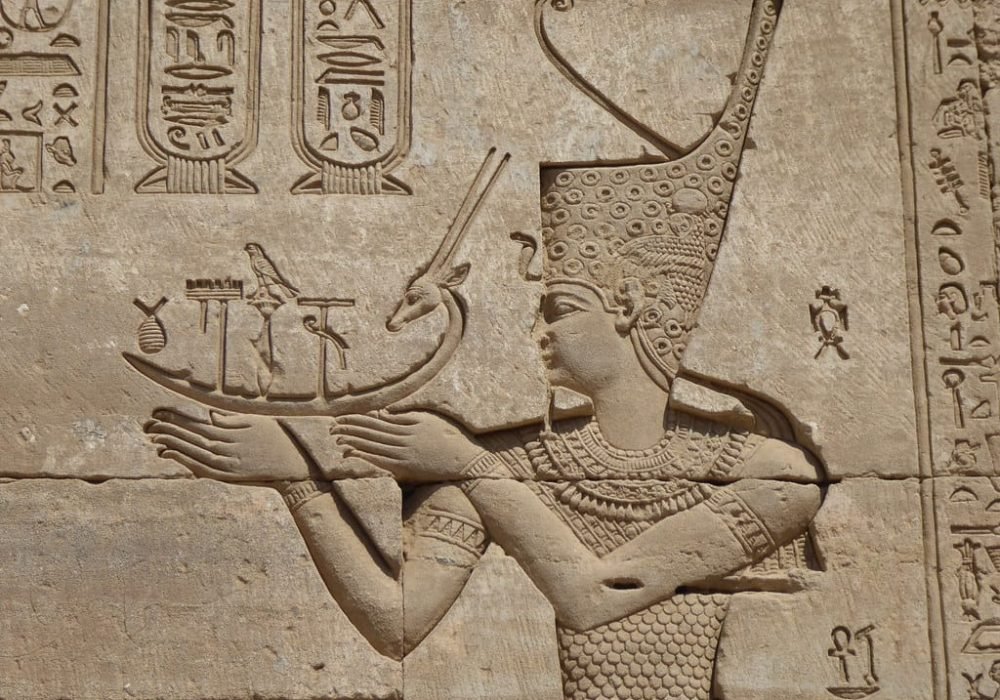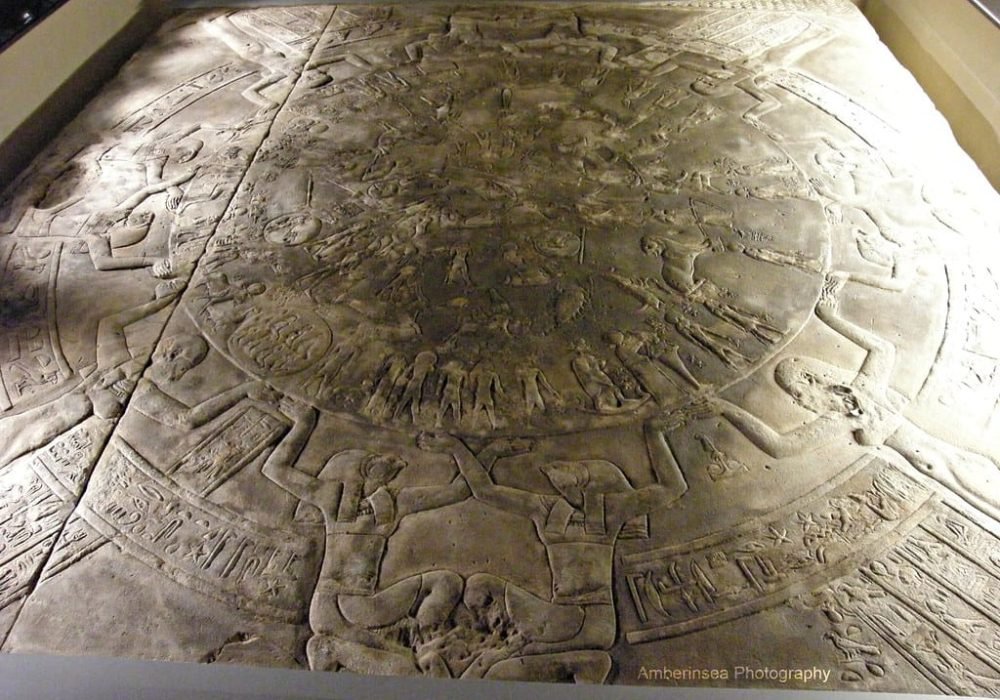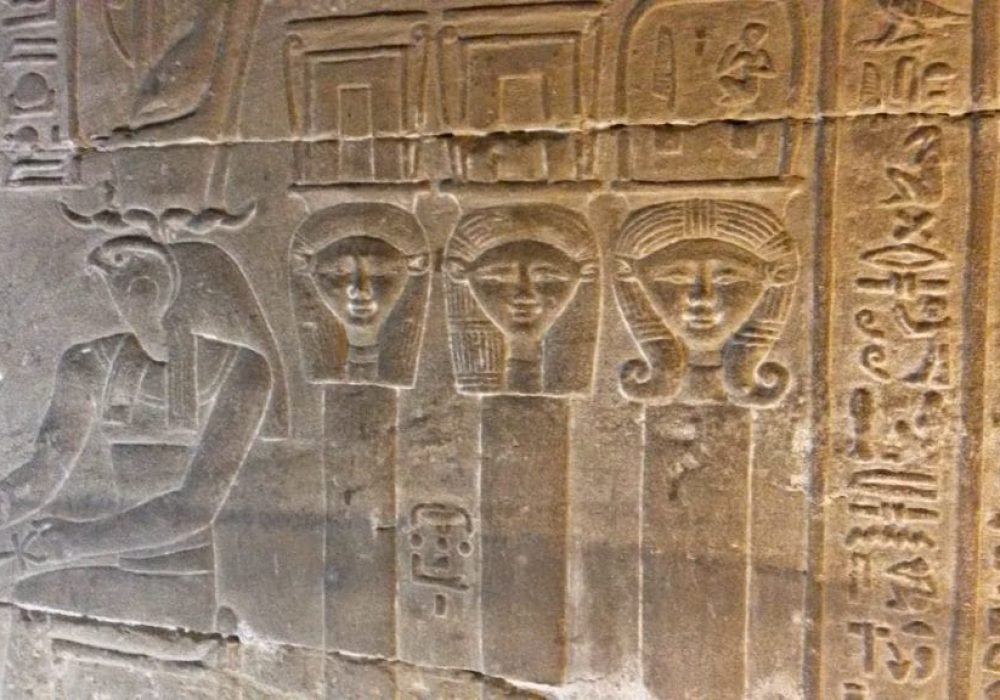Dendera Temple, located near the town of Qena in southern Egypt, is one of the best-preserved ancient Egyptian temples. This remarkable site is dedicated to Hathor, the goddess of love, music, and motherhood, and offers an immersive experience into Egypt’s ancient religious practices. Visitors can explore the intricately detailed Temple of Hathor, marvel at the famous Zodiac Ceiling, and enjoy the serene beauty of the Sacred Lake, all while learning about the astounding architecture and astronomical knowledge of the ancient Egyptians. The temple also features stunning reliefs and carvings that depict the mythologies of gods like Hathor, Osiris, and Ra, as well as the celestial connections they shared. With its peaceful atmosphere and rich history, Dendera Temple provides an unforgettable experience for history lovers and travelers seeking to delve into Egypt’s fascinating past.
- Egypt Tour Magic
- Egypt Tour Packages
- Excursions in Egypt
- Cairo Tours and Excursions
- Hurghada Tours and Excursions
- Soma Bay Tours and Excursions
- Makadi Bay Tours and Excursions
- Sahl Hasheesh Tours and Excursions
- El Gouna Tours and Excursions
- Marsa Alam Tours and Excursions
- Port Ghalib Tours and Excursions
- El Quseir Tours and Excursions
- Dendera and Abydos Day Tours
- Aswan Tours and Excursions
- Luxor Tours and Excursions
- Alexandria Tours and Excursions
- Sharm El Sheikh Tours and Excursions
- Top Rated Tours in 2025
- Optional Excursions in Egypt
- Private Transfer
- Blogs About egypt
- Ancient Egypt
- What You Need To know Before Your First Trip To Egypt
- Best Places to Visit in Egypt 2025
- Top Attractions in Red Sea Resorts 2025
- Top 10 Tourist Activities in Egypt
- Top 30 Activities You Can’t Miss in Egypt
- The Guide to Guided Tours in Egypt
- Egypt’s Ancient and Modern History
- The Nile River
- The Deserts of Egypt
- Historical Sites in Egypt
- Cairo
- Alexandria
- Luxor
- Aswan
- The Red Sea
- Dendera Temple
- El Fayoum Oasis
- Bahariya Oasis
- Siwa Oasis
- Al Alamein
- Marsa Matruh
- Ancient Egyptian gods
- famous Egyptian dishes
- UNESCO World Heritage sites
- About Us
- Why Egypt Tour Magic
- Egypt Tour Magic
- Egypt Tour Packages
- Excursions in Egypt
- Cairo Tours and Excursions
- Hurghada Tours and Excursions
- Soma Bay Tours and Excursions
- Makadi Bay Tours and Excursions
- Sahl Hasheesh Tours and Excursions
- El Gouna Tours and Excursions
- Marsa Alam Tours and Excursions
- Port Ghalib Tours and Excursions
- El Quseir Tours and Excursions
- Dendera and Abydos Day Tours
- Aswan Tours and Excursions
- Luxor Tours and Excursions
- Alexandria Tours and Excursions
- Sharm El Sheikh Tours and Excursions
- Top Rated Tours in 2025
- Optional Excursions in Egypt
- Private Transfer
- Blogs About egypt
- Ancient Egypt
- What You Need To know Before Your First Trip To Egypt
- Best Places to Visit in Egypt 2025
- Top Attractions in Red Sea Resorts 2025
- Top 10 Tourist Activities in Egypt
- Top 30 Activities You Can’t Miss in Egypt
- The Guide to Guided Tours in Egypt
- Egypt’s Ancient and Modern History
- The Nile River
- The Deserts of Egypt
- Historical Sites in Egypt
- Cairo
- Alexandria
- Luxor
- Aswan
- The Red Sea
- Dendera Temple
- El Fayoum Oasis
- Bahariya Oasis
- Siwa Oasis
- Al Alamein
- Marsa Matruh
- Ancient Egyptian gods
- famous Egyptian dishes
- UNESCO World Heritage sites
- About Us
- Why Egypt Tour Magic
Discover the Wonders of Dendera Temple: A Journey Through Ancient Egypt
1. Temple of Hathor
The Temple of Hathor at Dendera is the main attraction of the temple complex and is dedicated to the goddess of love, music, and motherhood. This majestic structure is incredibly well-preserved and offers a remarkable glimpse into ancient Egyptian religious practices. The temple is known for its stunning wall carvings and reliefs, which depict Hathor in various forms, as well as other gods, pharaohs, and scenes from Egyptian mythology. The Hypostyle Hall with its massive columns and intricately detailed carvings is a highlight, offering visitors a sense of the scale and grandeur of ancient Egyptian architecture.
2. Zodiac Ceiling
One of the most famous features of the Dendera Temple is the Zodiac Ceiling found inside the inner sanctum. This ceiling features an astronomical star map, known as the Dendera Zodiac, which illustrates the ancient Egyptians’ understanding of the stars, constellations, and celestial bodies. The ceiling is considered one of the best examples of ancient Egyptian astronomical knowledge and provides a fascinating look at how the Egyptians linked their religious beliefs to the cosmos. The intricate carvings are a must-see for anyone interested in Egyptian science and astrology.
3. The Dendera Light Mystery
Dendera Temple is also famous for the mysterious “Dendera Light” relief, which has sparked much debate among researchers and visitors alike. Some believe the reliefs show an ancient depiction of a light bulb or electric lamp, suggesting that the ancient Egyptians had access to advanced technologies. While this theory is controversial, it has gained popularity among those fascinated by ancient technologies. The Dendera Light continues to be a topic of intrigue, adding an air of mystery to the visit and providing visitors with a thought-provoking glimpse into ancient Egyptian engineering.
4. Sacred Lake
The Sacred Lake at Dendera Temple is a tranquil spot located near the temple. The lake was used for ritual purification in ancient Egyptian religious ceremonies, and it adds a serene atmosphere to the site. Visitors can admire the calm waters, which reflect the temple’s architecture, creating a peaceful scene perfect for relaxation and photography. The Sacred Lake, with its spiritual significance, enhances the overall experience of visiting Dendera and offers a moment of calm amidst the grandeur of the temple complex.
5. Roman Period Additions
The Dendera Temple Complex also features several additions from the Roman period, which were built long after the main temple was constructed. The Roman influence is visible in structures such as the outer courtyard, as well as other parts of the complex that were enhanced or built by Roman emperors. These additions provide a fascinating fusion of Egyptian and Roman architectural styles and give visitors an insight into the continued significance of the temple throughout various historical periods.
6. The Mammisi (Birth House)
The Mammisi, or birth house, located near the main temple, was used for religious ceremonies celebrating the birth of the divine child. This small structure is decorated with scenes of the goddess Hathor nursing her son Horus. The reliefs depict not only the divine birth but also the mythology surrounding it. This area adds another layer to the temple complex’s significance, showing how the ancient Egyptians viewed the cycle of life and death, as well as their religious rituals related to birth and rebirth.
7. The Osiris Temple
While less visited than the Temple of Hathor, the Temple of Osiris at Dendera is an important feature of the complex. Dedicated to Osiris, the god of the afterlife, the temple offers a deeper understanding of the Egyptian belief system. The temple is known for its intricate reliefs depicting Osiris in various forms, and it provides a contrasting but complementary perspective to the Hathor temple. Visitors will gain a fuller understanding of the pantheon of gods in Egyptian mythology and the interconnectedness of their divine roles.
8. Stunning Reliefs and Carvings
The walls of the Dendera Temple are adorned with remarkable reliefs and carvings that illustrate key aspects of ancient Egyptian life and religion. These reliefs depict gods, pharaohs, and scenes from mythology, all telling stories about the divine and the rulers of Egypt. Visitors will see stunning depictions of Hathor, Horus, and Ra, among other gods. The intricacy and preservation of the carvings make Dendera a paradise for those fascinated by Egyptian art and hieroglyphs.
9. The Dendera Zodiac at the Louvre Museum
While the original Dendera Zodiac is housed in the Louvre Museum in Paris, replicas of the ceiling can be found in the temple, allowing visitors to appreciate the beauty and craftsmanship of this ancient work of art. The Dendera Zodiac is an essential piece of Egyptian astronomical history, and its connection to both religious and celestial knowledge adds another layer of depth to the significance of the temple complex.
10. Off-the-Beaten-Path Experience
Dendera Temple is one of Egypt’s less crowded, more peaceful archaeological sites, making it an ideal location for those seeking a more intimate and immersive experience. Visitors can explore the complex at their own pace, taking in the remarkable architecture, art, and history without the hustle and bustle found at more popular sites like the Pyramids of Giza or Luxor. The tranquility of the site allows for deeper reflection and appreciation of ancient Egypt’s spiritual and architectural legacy.



